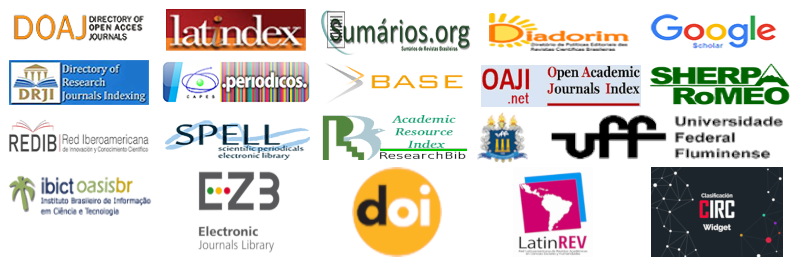Communities of Practice:
The Construction of Knowledge in a Research Group
DOI:
https://doi.org/10.20401/rasi.7.3.503Keywords:
practices, communities of practice, learning, research groupsAbstract
From the 1990’s onwards, a substantial volume of literature had been published about community of practice (CoP) and many scholars had been investigating their existence and the effectiveness in a variety of settings. In this scenario, this study aims at investigating whether the construction of the knowledge of a PhD research group occurs in the form of a CoP. Using the conceptual approach proposed by Wenger (1998) as an analytical basis, the present study combined multiple investigation methods, namely participant observation, analysis of the content of social media, interview, and questionnaire. Data collected was registered in field diaries which were subsequently analysed (Bardin, 2011). Results indicate that members construct their knowledge in a collaborative and cooperative way. The dimensions proposed by Wenger (1998) to identifying and distinguishing CoPs from other groups were present in the group. The conclusion is that the investigated research group can be classified as a CoP.
Downloads
References
Bardin, L. (2011) “Content Analysis” 3. ed. Lisbon, Edições.
Berg, B. L. (2009) “Qualitative Research Methods for the Social Sciences”, 4.ed. State University, Long Beach, California, USA.
Boylan, M. (2010) “Ecologies of participation in school classrooms” Teaching and Teacher Education. Vol. 26, N°. 1.
Brown, J. S. & Duguid, P. (2000) “The Social Life of Information.” Harvard Business Press.
Buckley, J.; Archibald, T.; Hargraves, M. & Trochim, W. M. (2015) “Defining and Teaching Evaluative Thinking: Insights From Research on Critical Thinking.” American Journal of Evaluation. Vol. 36, N°. 3, p. 375-388.
Chohan, U. W. (2013) “Fostering a community of practice among Parliamentary Budget Offices of the Commonwealth.” Commonwealth Parliamentary Journal. Vol. 3, p. 198-201.
Cox, A. (2005) “What are communities of practice? A comparative review of four seminal works.” Journal of Information Science. Vol. 31, N° 6, p, 527–540.
Denzin, N. K. (1978) “The research act: A theoretical introduction to sociological methods.” New York, McGraw-Hill.
Gareth, M. (1989) “Teaching Organization Theory: An Instructor's Manual.” Newbury Park, CA, Sage Publications.
Godoy, A. S. (1995) “Introduction to qualitative research and its possibilities.” Revista de administração de empresas. Vol. 35, N°. 2, p. 57-63.
Grossman, P. (2001) “Toward a theory of teacher community.” Teachers College Record.
Handley, K.; Sturdy, A.; Fincham, R. & Clarck, T. (2006) “Within and beyond communities of practice: making sense of learning through participation, identity and practice.” Journal of Management Studies. Vol. 43, N°. 3, p. 641–53.
Kimble, C.; Hildreth, P. & Bourdon, I. (2008) “Communities of Practice.” Creating Learning Environments for Educators. Vols 1 & 2. Information Age Publishing, North Carolina.
Lave, J. & Wenger, E. (1991) “Situated Learning: Legitimate Peripheral Participation.” Cambridge University Press.
Mendes, L. & Urbina, L. M. S. (2015) “Analysis of Brazilian academic production in communities of practice.” RAC - Revista de Administração Contemporânea. Vol. 19, N°. 3, p. 305-327.
Morgan, G. & Smircich, L. (1980) “The case for qualitative research.” Academy of management review. Vol. 5, N°. 4, p. 491-500.
Nicolini, D.; Gherardi, S. & YANOW, D. (Eds.). (2003) “Knowing in organizations: A practice-based approach.” ME Sharpe.
Nistor, N.; Baltes, B. & SCchustek, M. (2012) “Knowledge sharing and educational technology acceptance in online academic communities of practice.” Campus-Wide Information Systems. Vol. 29, N°2.
Roberts, J. (2006) “Limits to communities of practice.” Journal of Management Studies. Vol. 43, N°. 3, p. 623-639.
Santos, L. S. & Silveira, R. A. (2015) “For an epistemology of organizational practices: the contribution of Theodore Schatzki.” Organizações & Sociedade. Vol. 22, N°. 72, p. 79-98.
Schatzki, T. R. (1996) “Social practices: A Wittgensteinian approach to human activity and the social.” Cambridge University Press.
_______________.(2002) “The site of the social: A philosophical account of the constitution of social life and change.” Penn State Press.
_______________. (2003) “A new societist social ontology.” Philosophy of the Social Sciences, Vol. 33, N°. 2, p. 174-202.
_______________. (2012) “A Primer on Practices. In Practice-based Education: Perspectives and Strategies.” edited by J. Higgs, R. Barnett, & S. Billett, p. 13–26, Rotterdam: Sense Publishers.
Spradley, J. P. (1980) “Participant Observation.” New York, Rinehart and Winston.
Takimoto, T. (2012) “Using Communities of Practice for the Learning of Students with Poor Vision.” International Journal of Advanced Corporate Learning. Vol. 5, N°.3.
Van Maanen, J. (1998) “Varieties of Qualitative Research.” Beverly Hills, CA, SAGE.
Wenger, E. (1998) “Communities of practice: Learning, meaning, and identity.” Cambridge University Press.
¬
___________. (2000) “Communities of practice and social learning systems.” Organization. Vol. 7, N°. 2, p. 225-246.
___________. (2001) “Communities of practice: learning, meaning and identity.” Barcelona, Paidós.
___________. (2003) “Communities of Practice and Social Learning Systems.” In: Nicolini, D.; Gherardi, S. & Yanow D. (Eds.). Knowing in organizations: A practice-based approach. ME Sharpe.
Downloads
Published
Issue
Section
License
Copyright (c) 2021 Review of Administration, Society and Innovation

This work is licensed under a Creative Commons Attribution 4.0 International License.
RASI, in accordance with Law No. 9,610 of February 19, 1998, which amends, updates and consolidates Brazilian copyright law and makes other provisions, adopts the following conditions of the Copyright Assignment:
1. RASI maintains, with the transfer of copyrights, the possession of rights over the content published;
2. The author retains his moral rights of the content, including the right to be identified as the author whenever the content is published;
3. Despite the attribution of copyright, the author retains the right to reuse the material in future collections of his own work without encumbrance. The acknowledgments of the previous publication in the RASI are the only requirements in such cases;
4. The author may make photocopies of the content, or distribute it by electronic mail or fax, provided that they are intended for their own classes and for the purpose of meeting research objectives, provided that: (a) such copies are not resold and (b) reference to the original source of the publication and the name of the RASI are clearly indicated on all copies made of the document.











